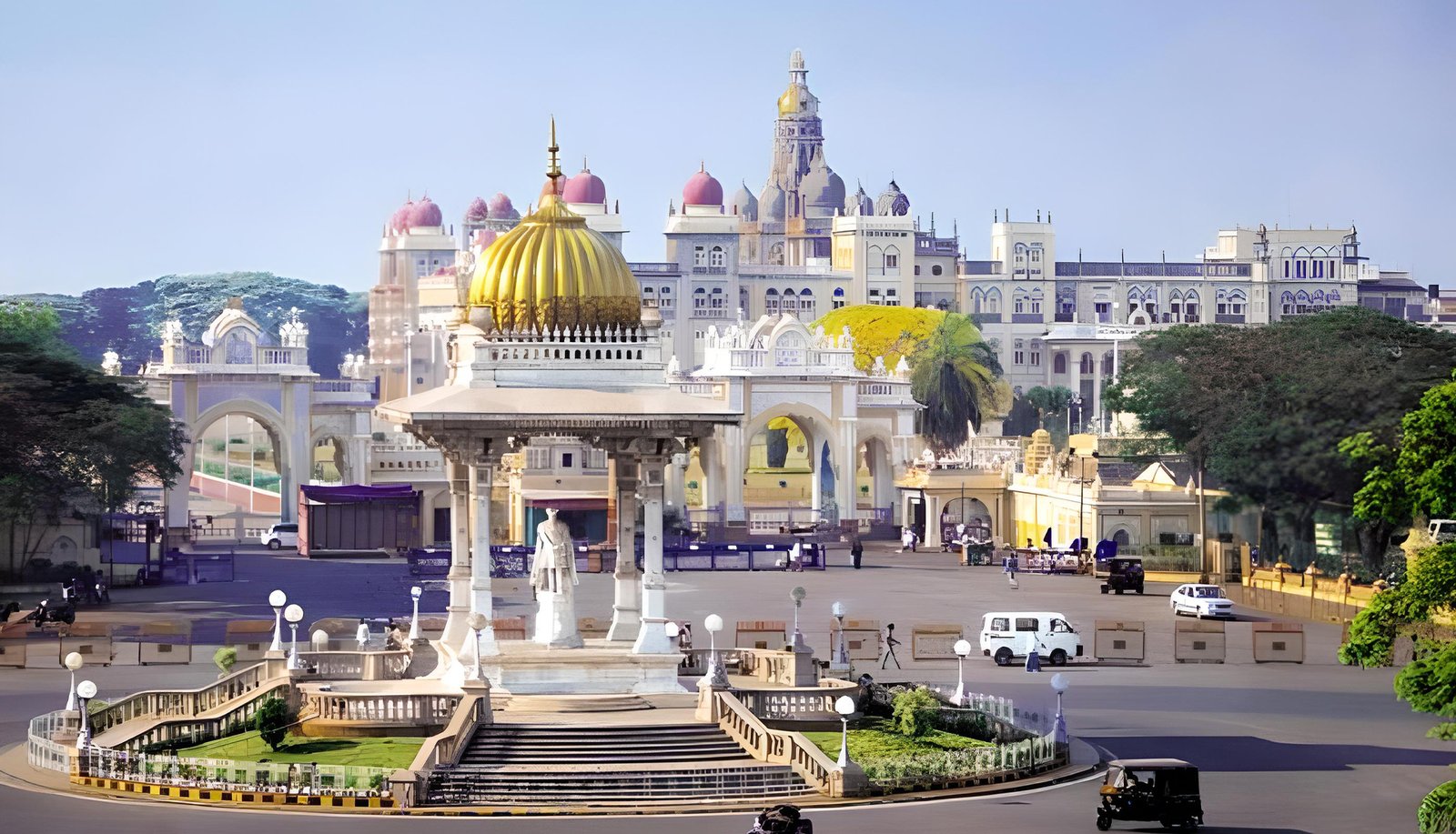
Mysore, also known as the “Cultural Capital of Karnataka,” is a charming city located in the southern part of India. Known for its rich cultural heritage, magnificent palaces, and beautiful gardens, Mysore attracts a large number of visitors from all over the world. Here are some of the top places to visit in Mysore
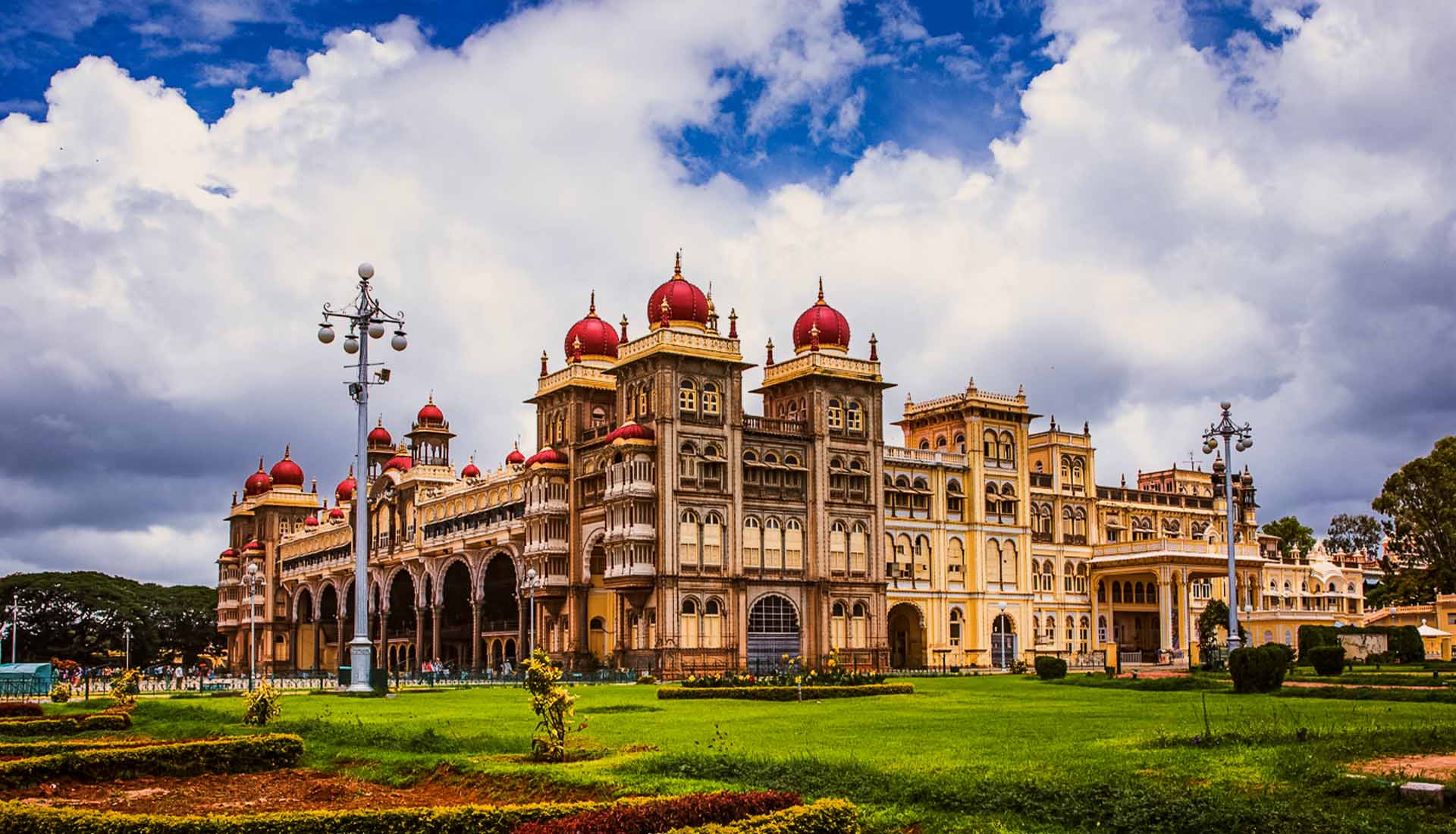
The Mysore Palace, an awe-inspiring example of Indo-Saracenic architecture, stands as one of Mysore’s top tourist attractions. Also called Amba Vilas Palace, it served as the royal residence and remains the official home of the Mysore royal family. Constructed in 1912 for the 24th ruler of the Wodeyar Dynasty, Maharaja Krishnaraja Wadiyar IV, and expanded by his son Maharaja Jayachamaraja Wadiyar, it’s among the country’s largest palaces. The facade showcases a harmonious blend of Hindu, Muslim, Rajput, and Gothic styles, radiating regal grandeur, complemented by the scenic Chamundi Hills to the east. A highly visited historical monument, Mysore Palace hosts captivating light and sound shows and vibrant Dussehra celebrations, making it a must-see destination for both local and foreign tourists, second only to the Taj Mahal.
website:-http://www.mysorepalace.gov.in
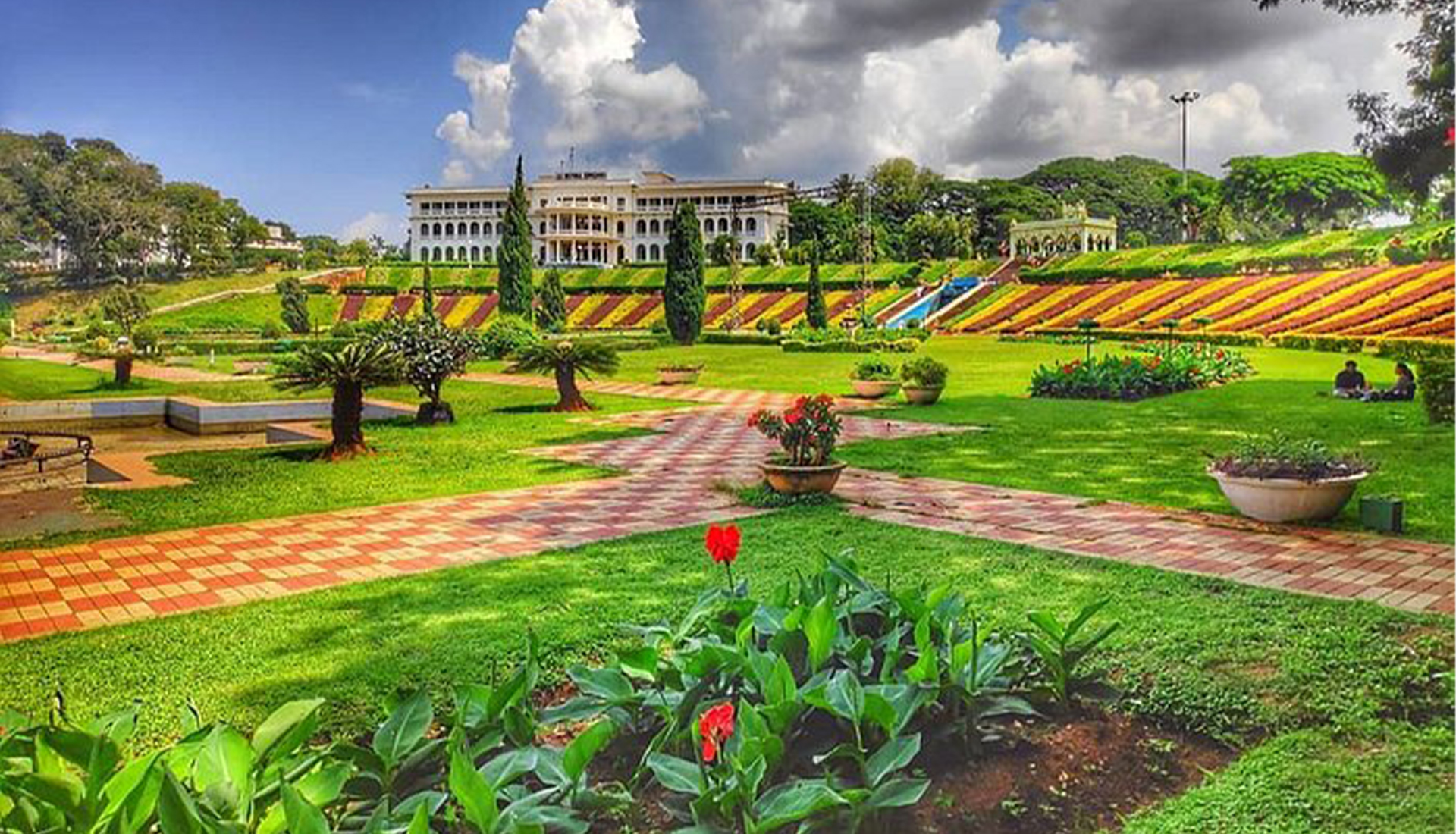
Brindavan Gardens, considered the best in Mysore, sprawl over an expansive area of approximately 150 acres. This beautiful stretch of land is located just below the popular Krishnaraja Sagar Reservoir, built across the Cauvery or Kaveri River. Situated about 18 kilometers northwest of the city of Mysore, the idea of constructing this fascinating garden close to the dam was conceived by two former Devans of Mysore, namely Sir M. Visveshwaraiah and Sir Mirza M. Ismail.
The most notable feature of Brindavan Gardens is the beautiful fountains that look stunning during the night when they are illuminated. Sunset is the best time of the day to visit this garden and enjoy the sight of water (from fountains) dancing to the tunes of pleasant music. The area of the garden covered with shrubs, grass, and trees looks like a well-manicured lawn. Within the garden, a children’s park, hydraulic research station, and fisheries station are also maintained. Adding to the beauty of the garden is an attractive sculpture of Goddess Cauvery, set at the foot of the dam.
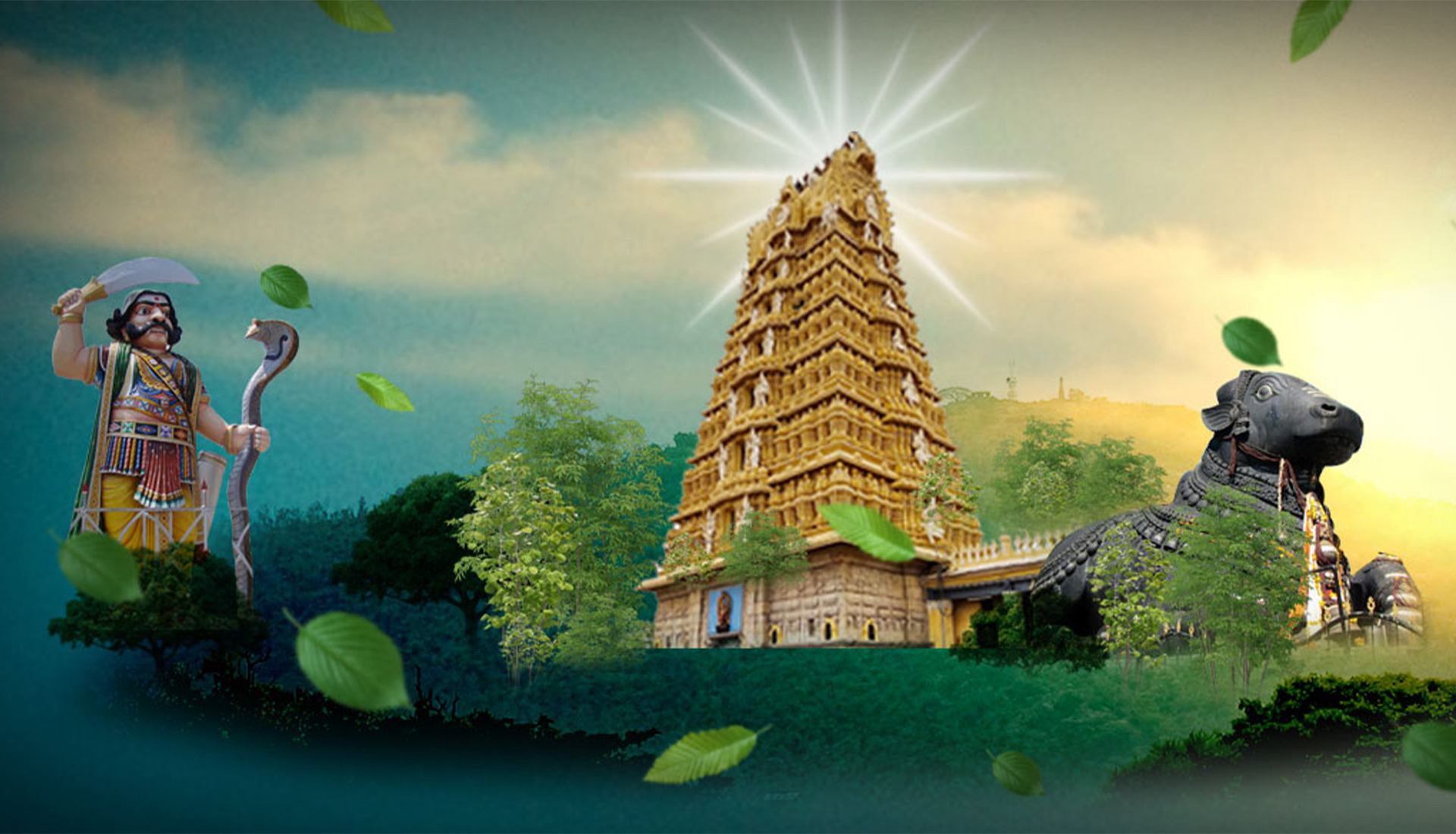
Chamundeswari temple stands atop Chamundi hill, rising 3,489 ft. above sea level and located 13 km from Mysore. Devotees dedicate the temple to Sri Chamundeswari, the titular deity of the Mysore Royal Family, also known as ‘Mahishasura Mardini’ for slaying the buffalo-headed demon Mahishasura.
In 1827, Krishnaraja Wodeyar III, to honor the goddess, constructed a Gopura with gold finials and installed statues of himself and his three queens. Additionally, he organized festivals and processions and gifted Simhavahana in 1843.
The complex houses two other temples, Narayana Swamy and Mahabaleswara. The latter, built before the Hoysala rule, received donations from Hoysala King Vishnuvardhana in 1128 A.D., as indicated by epigraphical evidence citing the area as Mabhala or Mabbala theertha.
Noteworthy is the colossal Nandi, one of India’s largest, measuring 16 ft. tall at the front and 25 ft. in length, adorned with exquisite pendent bells around its neck, created under the patronage of Doddadevaraja.

St. Philomena Church, a majestic Catholic edifice in Mysore, Karnataka, is celebrated as one of India’s largest churches, distinguished by its Neo-Gothic architecture. Erected in 1936 and devoted to the 3rd-century martyr, Saint Philomena, the church’s design by French architect Daly takes inspiration from Germany’s Cologne Cathedral.
Resembling a Latin cross, the church features a central nave, side aisles, and transepts adorned with intricate carvings, stained glass windows, and soaring spires reaching 175 feet (53 meters). The church houses a precious relic of St. Philomena, brought from Rome in the 19th century, showcased in a dedicated chamber, drawing devout followers from across the globe.
A prominent tourist attraction in Mysore, St. Philomena Church welcomes visitors throughout the year, offering an opportunity for exploration, contemplation, and participation in regular masses and religious services.
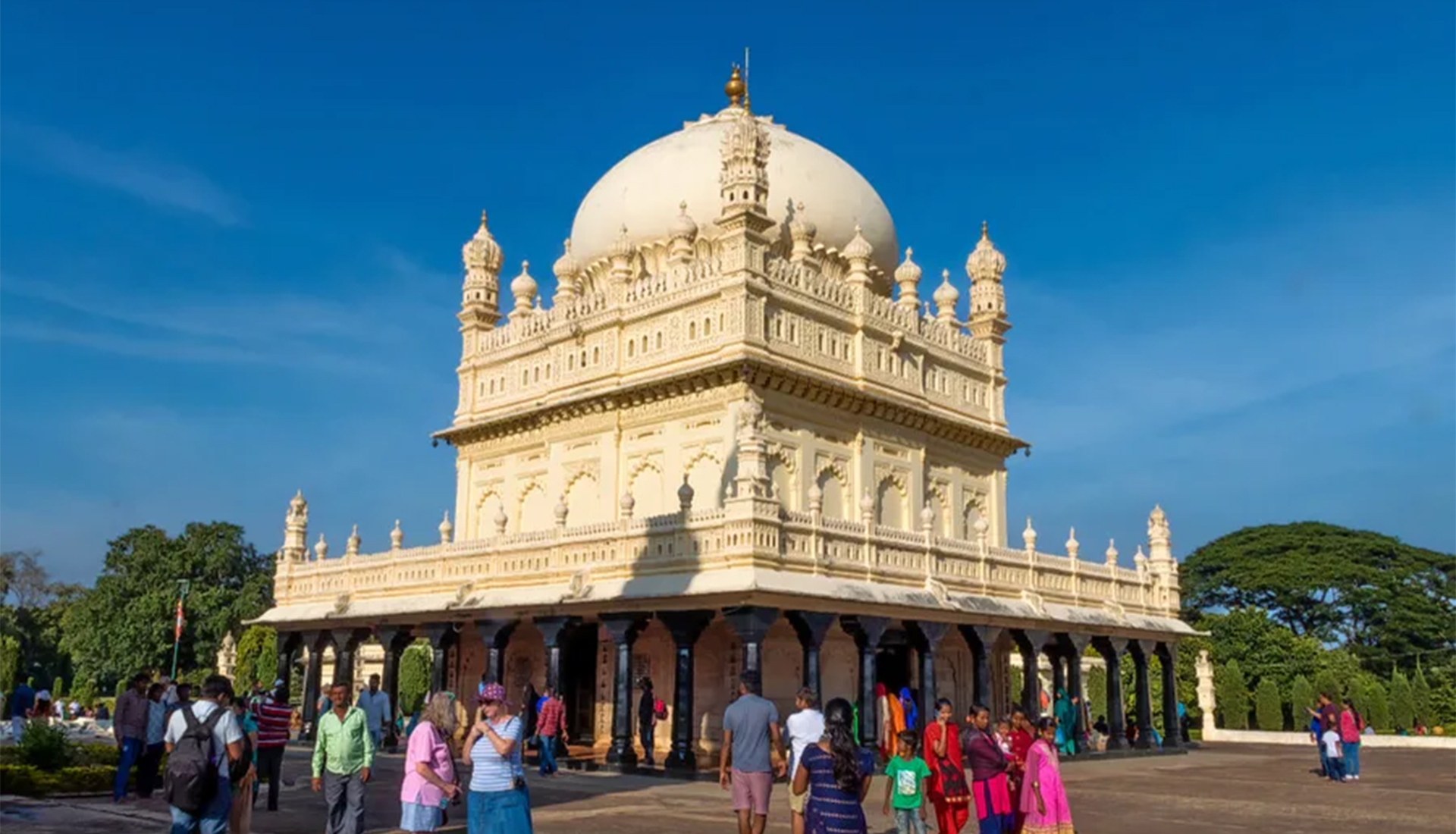
Srirangapatna, located on the banks of the Kaveri River in Karnataka, holds historical significance as the capital of the Kingdom of Mysore during the late 18th century rule of Tipu Sultan. Notable for two crucial battles in 1792 and 1799, the town became a pivotal site of historical importance. Today, Srirangapatna attracts tourists with its cultural treasures, including the grand Ranganathaswamy Temple, showcasing intricate carvings and remarkable architecture. The Daria Daulat Bagh, a garden and palace constructed by Tipu Sultan, now serves as a museum, providing insights into his life. Additionally, the town’s vibrant silk industry adds to its allure, enticing visitors with high-quality silk fabrics and traditional handicrafts found in local markets.

Ranganathittu Bird Sanctuary is a wildlife sanctuary located near the town of Srirangapatna, in the southern Indian state of Karnataka. The sanctuary is situated on the banks of the river Kaveri and is home to a diverse range of bird species and other wildlife.
The sanctuary was established in 1940 and covers an area of approximately 57 acres (23 hectares). It is known for its unique ecosystem, which includes several small islands and riverine forests that provide a habitat for a variety of bird species.
Ranganathittu Bird Sanctuary is a popular destination for birdwatchers and nature lovers. The sanctuary is home to over 170 species of birds, including migratory birds that visit during the winter months. Some of the bird species found in the sanctuary include the painted stork, black-headed ibis, common spoonbill, and kingfisher.
Apart from birds, the sanctuary is also home to several other species of wildlife, including crocodiles, otters, and fish. Visitors can take a boat ride along the river to get a closer look at the birds and other wildlife in their natural habitat.
The best time to visit Ranganathittu Bird Sanctuary is between the months of November and June, when the weather is pleasant and the birds are most active. The sanctuary is open to visitors from 9:00 am to 6:00 pm every day, and an entry fee is charged.
Overall, Ranganathittu Bird Sanctuary is a must-visit destination for birdwatchers and nature lovers, with plenty of opportunities to observe a variety of bird species and other wildlife in a picturesque setting.
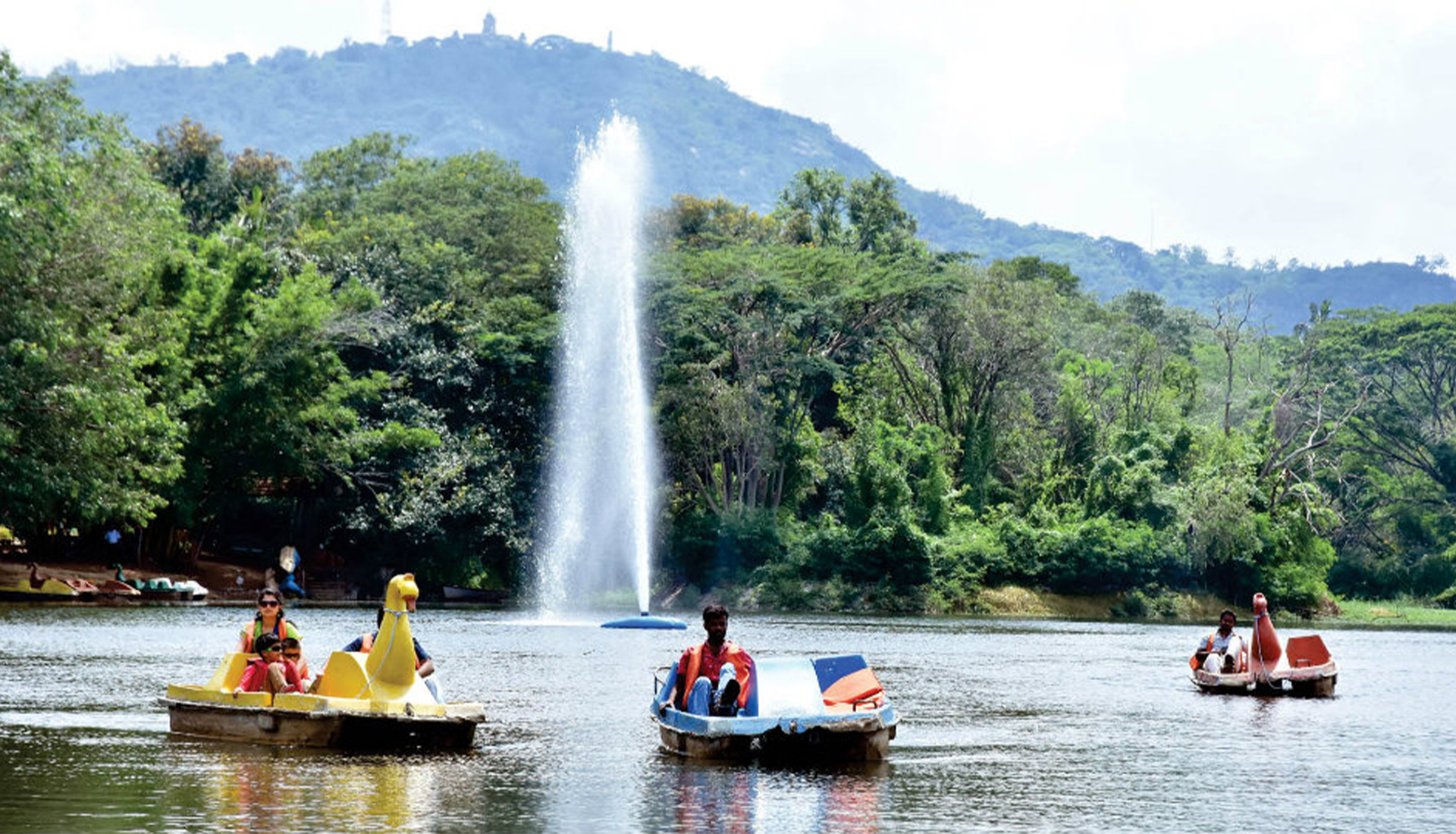
Karanji Lake is a picturesque lake located in the city of Mysore, in the southern Indian state of Karnataka. The lake is situated at the foot of the Chamundi Hills and is spread over an area of approximately 90 acres (36 hectares).
The lake was originally built as a source of drinking water for the city, but it has now been developed into a popular tourist destination and a conservation area for migratory birds.
Karanji Lake is surrounded by lush greenery and is home to over 90 species of birds, including migratory birds that visit during the winter months. Some of the bird species found in the lake include painted storks, pelicans, and cormorants.
Apart from birdwatching, visitors to Karanji Lake can also enjoy boating, walking on the lakefront, and exploring the adjacent Butterfly Park, which is home to over 50 species of butterflies. The park also has a small museum that provides information about the life cycle of butterflies and their importance in the ecosystem.
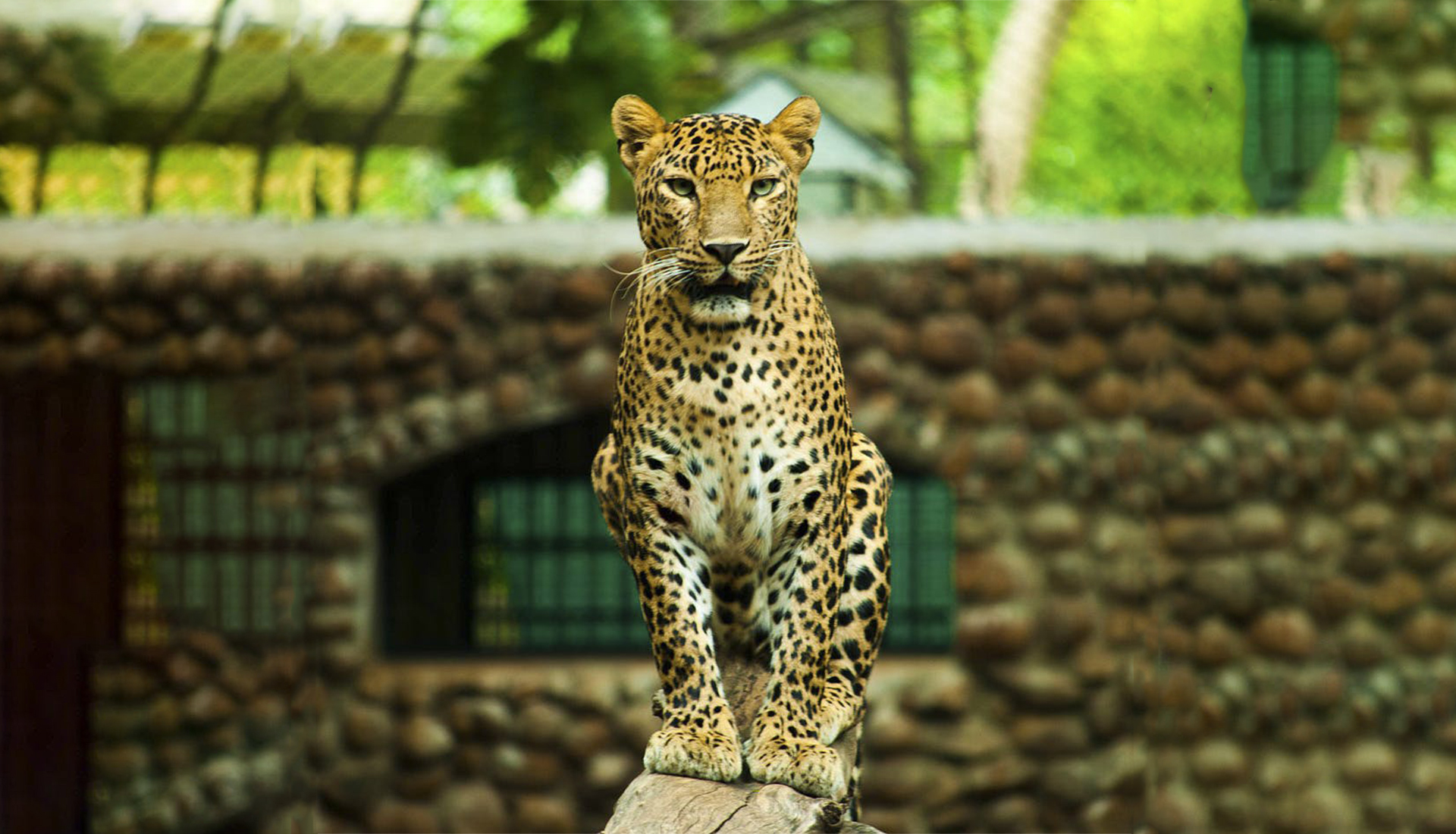
Mysore Zoo, or Sri Chamarajendra Zoological Gardens, situated in Mysore, Karnataka, is a renowned zoological park spanning approximately 157 acres (63 hectares). Established in 1892, it stands as one of India’s oldest and well-maintained zoos, contributing significantly to wildlife conservation.
The zoo has achieved success in breeding endangered species within captive environments. Boasting over 150 animal species, including tigers, lions, elephants, giraffes, zebras, primates, birds, and reptiles, Mysore Zoo offers a diverse and educational experience. Notably, it features a dedicated section for nocturnal animals, allowing visitors to observe creatures active during the night.
In addition to captivating animal exhibits, the zoo provides facilities such as a children’s park, a museum, and a food court. Actively engaged in educational programs, Mysore Zoo plays a pivotal role in promoting awareness and conservation of wildlife.
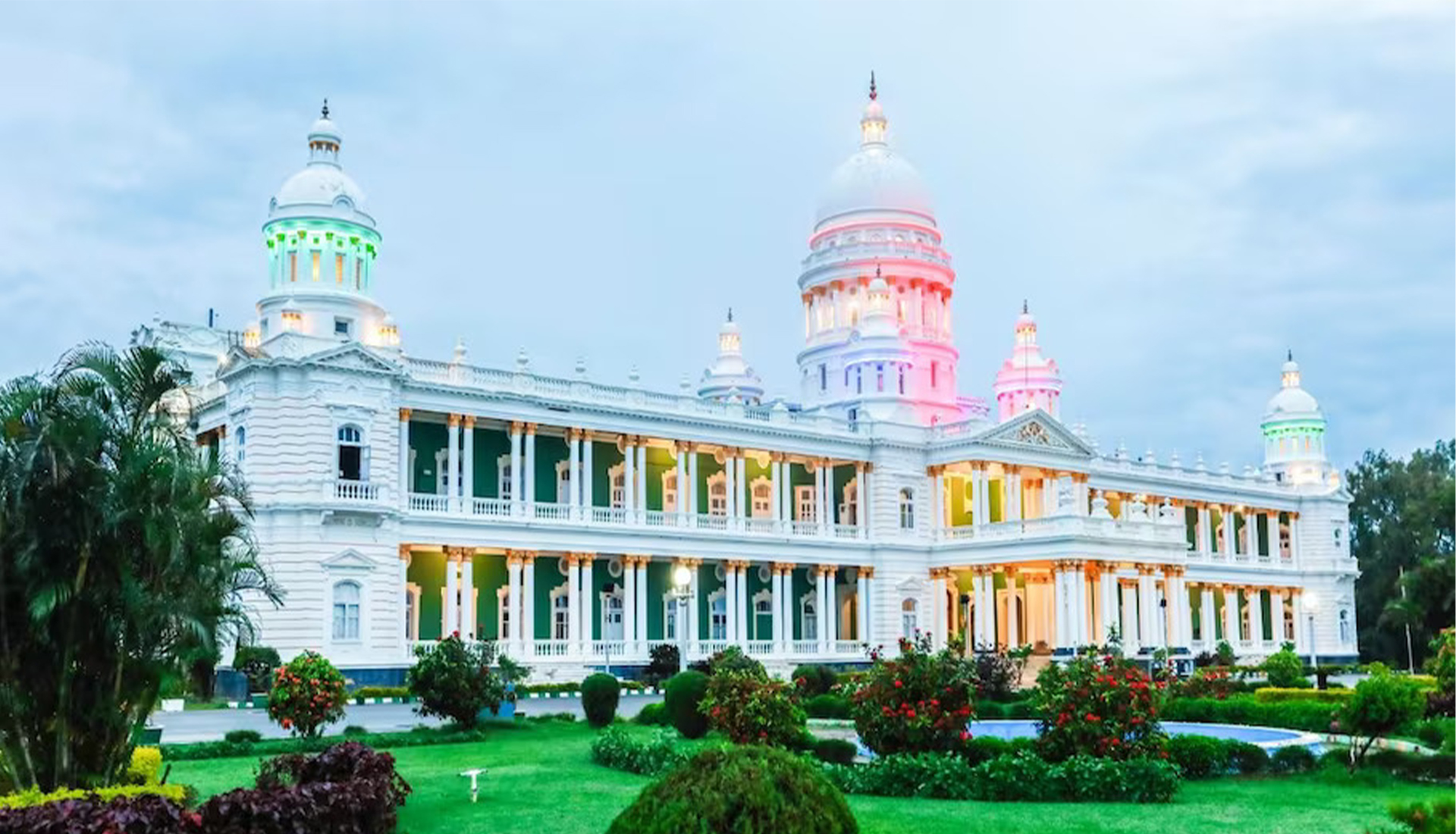
Lalitha Mahal Palace, an opulent palace hotel in Mysore, Karnataka, carries a legacy dating back to 1921. Constructed by Maharaja Krishnaraja Wadiyar IV as a guest house for esteemed royal visitors, the palace pays homage to his wife, Lalitha Kumari. Influenced by neoclassical design reminiscent of St. Paul’s Cathedral in London, the palace sprawls across 15 acres, surrounded by lush gardens and scenic Chamundi Hills.
Now a heritage hotel, Lalitha Mahal Palace offers 54 rooms and suites adorned with elegant furnishings and modern amenities. Guests experience luxurious accommodations, exquisite dining, and exceptional service. The palace features a range of facilities, including a swimming pool, fitness center, spa, and diverse dining options serving Indian and international cuisines.
Beyond its role as a regal retreat, Lalitha Mahal Palace serves as a venue for weddings, conferences, and events, further enhancing its status as a symbol of grandeur and sophistication in Mysore.

Kaveri River in the Indian state of Karnataka. The dam is located about 18 kilometers (11 miles) from the city of Mysore and about 140 kilometers (87 miles) from the state capital, Bangalore.
The KRS Dam was built in 1924 by the then ruler of Mysore, Krishnaraja Wadiyar IV, and is named after him. The dam is approximately 49 meters (161 feet) tall and 860 meters (2,820 feet) wide, and has a storage capacity of 49,000,000,000 cubic feet (1,390,000,000 cubic meters).
The main purpose of the KRS Dam is to provide irrigation water to the surrounding agricultural areas, and it is one of the major sources of water for the Cauvery Delta. The dam also generates hydroelectric power, with a capacity of 42 megawatts.
The KRS Dam is a popular tourist destination, known for its scenic beauty and lush green surroundings. Visitors can take a leisurely stroll on the dam’s walkway, which offers stunning views of the reservoir and the surrounding hills. Boating and fishing are also popular activities at the dam.
The dam is also home to the Brindavan Gardens, which is a beautifully landscaped garden spread over an area of about 60 acres (24 hectares). The garden features fountains, musical fountains, and illuminated trees, and is a popular spot for picnics and evening walks.
Overall, the KRS Dam is a must-visit destination for those who appreciate natural beauty and engineering marvels. The dam’s importance to the region’s agriculture and its picturesque surroundings make it a unique and fascinating attraction.
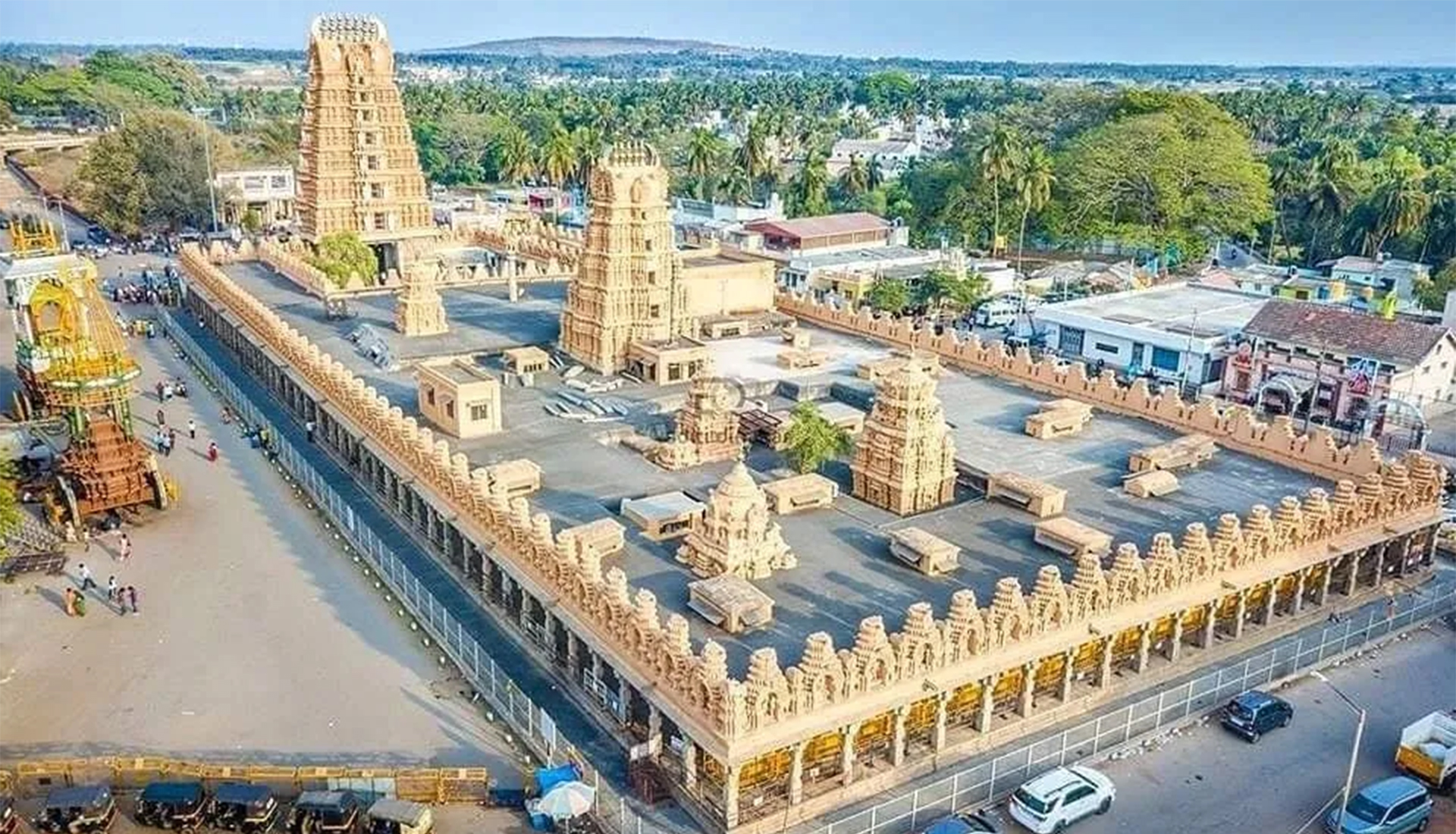
Nanjangud, a quaint town 23 kilometers south of Mysore in Karnataka, sits gracefully on the Kapila River’s banks, a tributary of the Kaveri. Its ancient gem, the Nanjangud Temple or Srikanteshwara Temple, dedicated to Lord Shiva, traces its roots back to the 9th century Ganga dynasty, making it one of South India’s oldest temples.
The temple’s architecture uniquely fuses Dravidian and Hoysala styles, featuring shrines and halls, with the main sanctum housing the revered Shiva lingam. Nanjangud comes alive during its annual “Nanjangud Rajaghatta Festival” or “Srikanteshwara Car Festival” in March and April, where Lord Shiva’s idol graces a grand procession on a chariot, drawn by devoted crowds.
Beyond its religious significance, Nanjangud thrives industrially, particularly in textiles, boasting cotton mills and handloom weaving units that contribute significantly to local employment.

The Railway Museum in Mysore, Karnataka, offers a captivating exploration of India’s railway heritage. Housed within the meticulously restored 1924 Mysore railway station building, the museum unfolds the history and evolution of Indian railways through diverse exhibits, including locomotives, coaches, and railway artifacts spanning different eras.
Notable highlights of the collection feature a 1927 steam locomotive from the Nilgiri Mountain Railway, a miniature track-operating toy train model, and a vintage saloon car once used by the Maharaja of Mysore. A delightful ride on a toy train within the museum grounds adds a charming touch, making it a favorite for visitors of all ages.
Against the significant backdrop of the Mysore railway station, the museum provides an immersive experience, offering insights into the historical and pivotal role of Indian railways in the country’s development and transportation infrastructure. The Railway Museum stands as a fascinating journey into the captivating world of Indian railways.
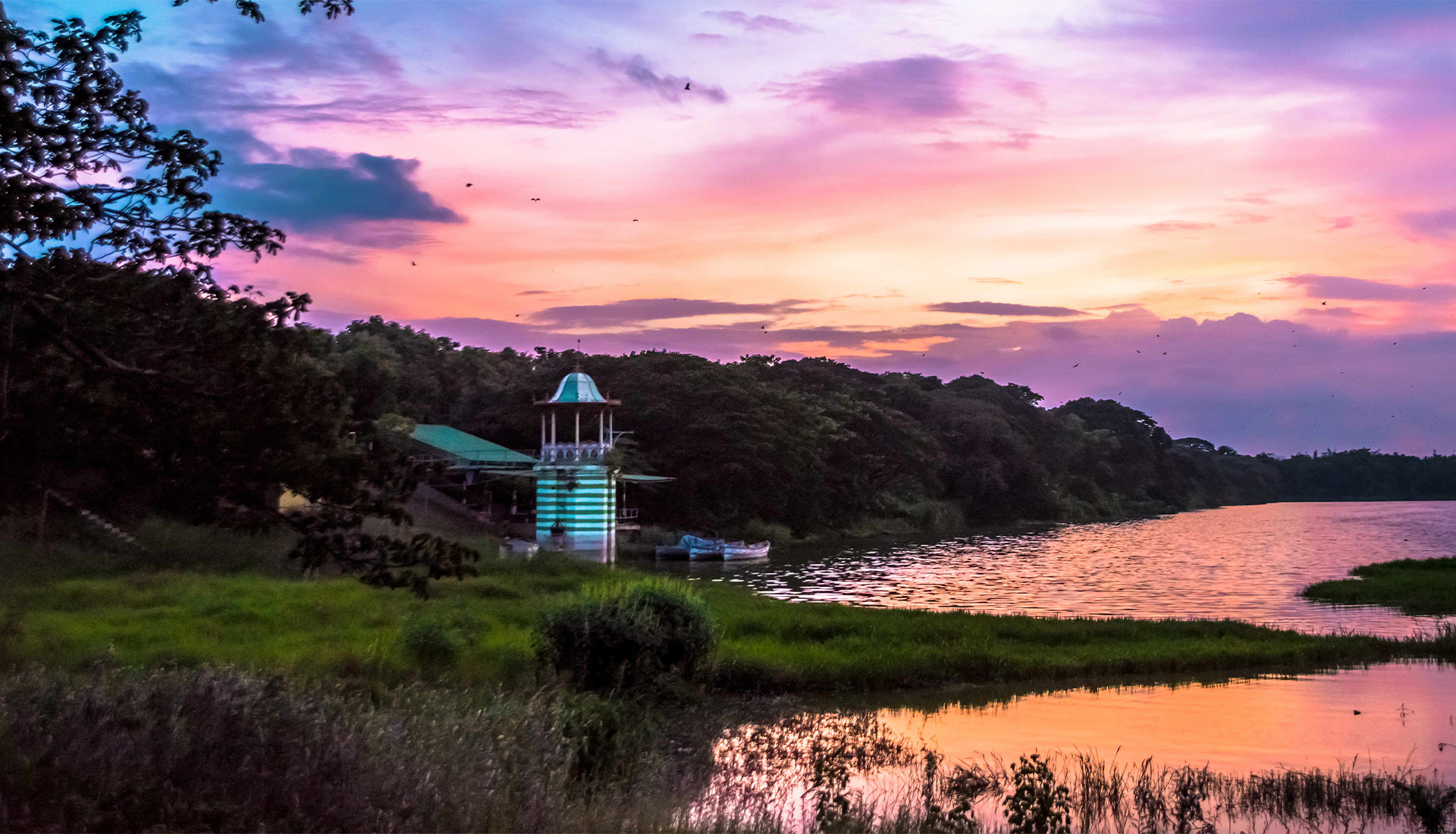
Kukkarahalli Lake is a beautiful lake located in the city of Mysore, in the Indian state of Karnataka. The lake is situated in the heart of the city, and is a popular spot for locals and tourists alike.
The Kukkarahalli Lake is spread over an area of about 120 hectares (296 acres) and is surrounded by lush green trees and hills. The lake is an important source of drinking water for the city, and is also a popular destination for bird watchers.
The lake is home to a wide variety of bird species, including migratory birds such as painted storks, pelicans, and ibises. Visitors to the lake can take a leisurely stroll on the well-maintained walking path that runs around the lake, or sit on one of the benches and enjoy the peaceful surroundings.
Kukkarahalli Lake is also a popular spot for boating, and visitors can rent paddle boats and rowing boats to explore the lake. Fishing is also allowed at the lake, with a permit from the authorities.
The lake has a rich history, dating back to the time of the Mysore Maharajas. It was originally created as a water storage tank for the city’s irrigation needs, and has since evolved into a popular recreational spot
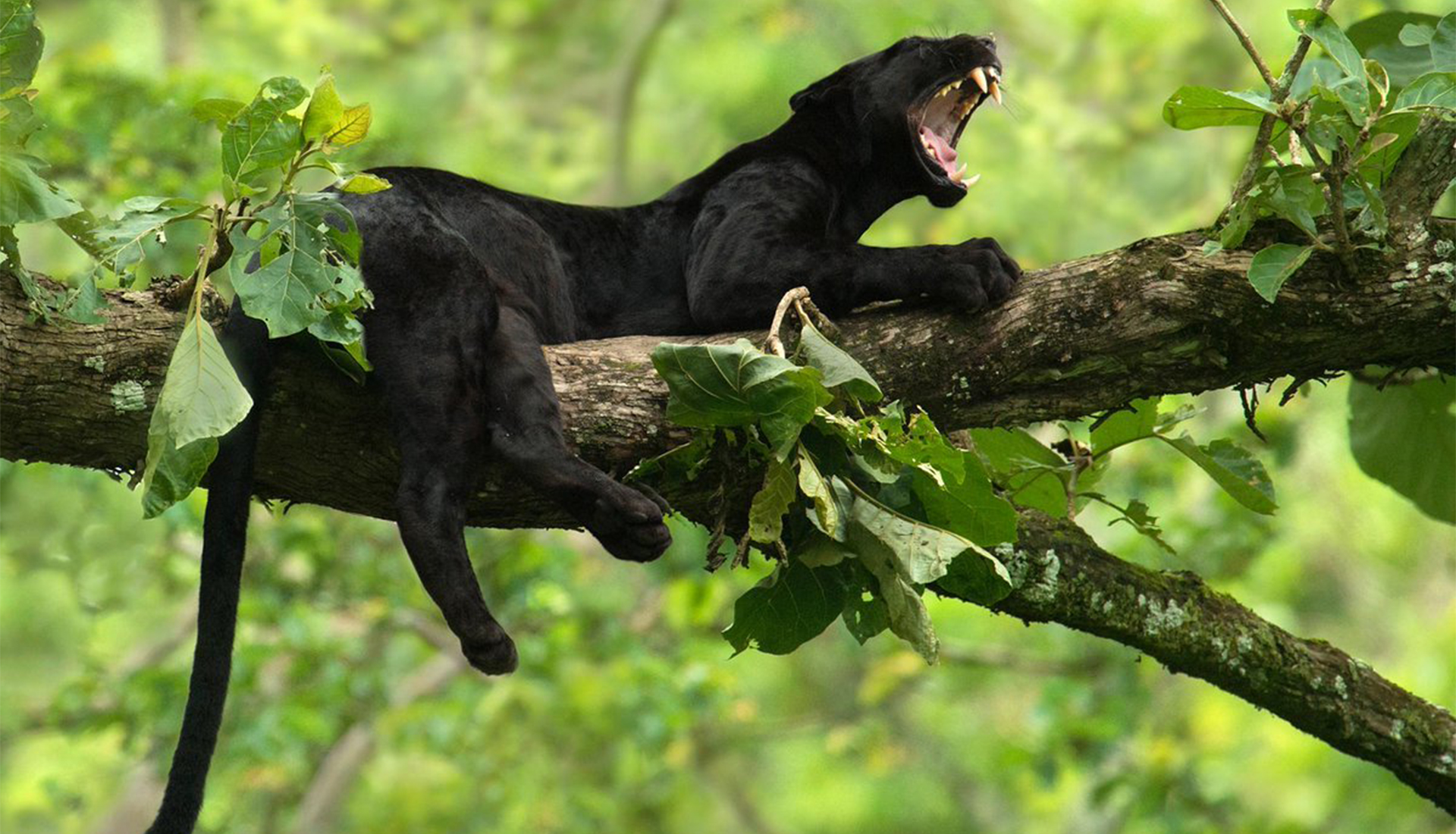
Bandipur National Park, situated at the foothills of the Western Ghats in Karnataka, India, spans 874 square kilometers and emerges as a renowned wildlife sanctuary. Home to approximately 70 tigers, alongside leopards, elephants, sloth bears, and a plethora of deer and antelope species, the park is a biodiversity hotspot. Over 200 bird species make it a paradise for birdwatchers.
Visitors can partake in jungle safaris, bird watching tours, and trekking activities. Jeep and elephant safaris offer intimate encounters with the diverse wildlife. Beyond being a sanctuary for animals, Bandipur is a habitat for indigenous tribal communities. Exploring their traditions, customs, and purchasing handicrafts from local artisans adds cultural richness to the experience.
Bandipur National Park stands as a must-visit destination, offering a captivating blend of rich biodiversity, stunning landscapes, and cultural insights for wildlife enthusiasts and nature lovers.
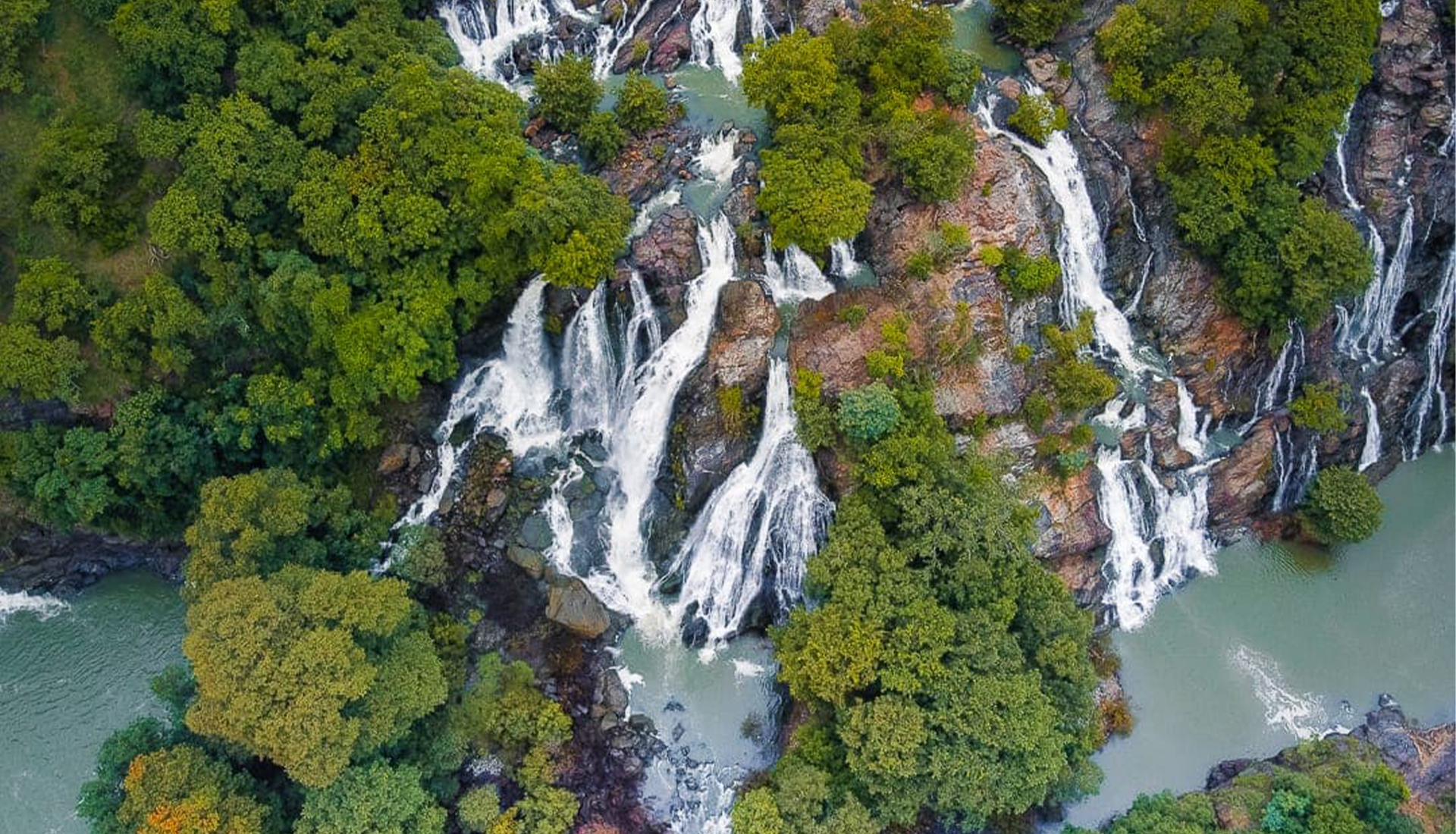
Shivanasamudra Falls, situated on the Kaveri River in Karnataka, India, is a mesmerizing natural spectacle encompassing two falls, Gaganachukki and Bharachukki, each offering unique charm. Located about 140 kilometers from Bangalore, these falls captivate with their scenic beauty and the echoing roar of cascading water.
Gaganachukki features a striking horseshoe-shaped cascade, while Bharachukki, wider and more scenic, showcases multiple streams gracefully descending over rocks. Visitors can savor breathtaking views from designated viewpoints, providing panoramic glimpses of the surrounding landscape. The lush forests surrounding the falls offer trekking trails for those seeking a more immersive experience.
Apart from their visual appeal, Shivanasamudra Falls plays a vital role in generating hydroelectric power for Karnataka, hosting several power stations in the vicinity. The best time to visit is from September to January, when the falls reach their peak magnificence, particularly during the monsoon season, creating an enchanting natural spectacle.
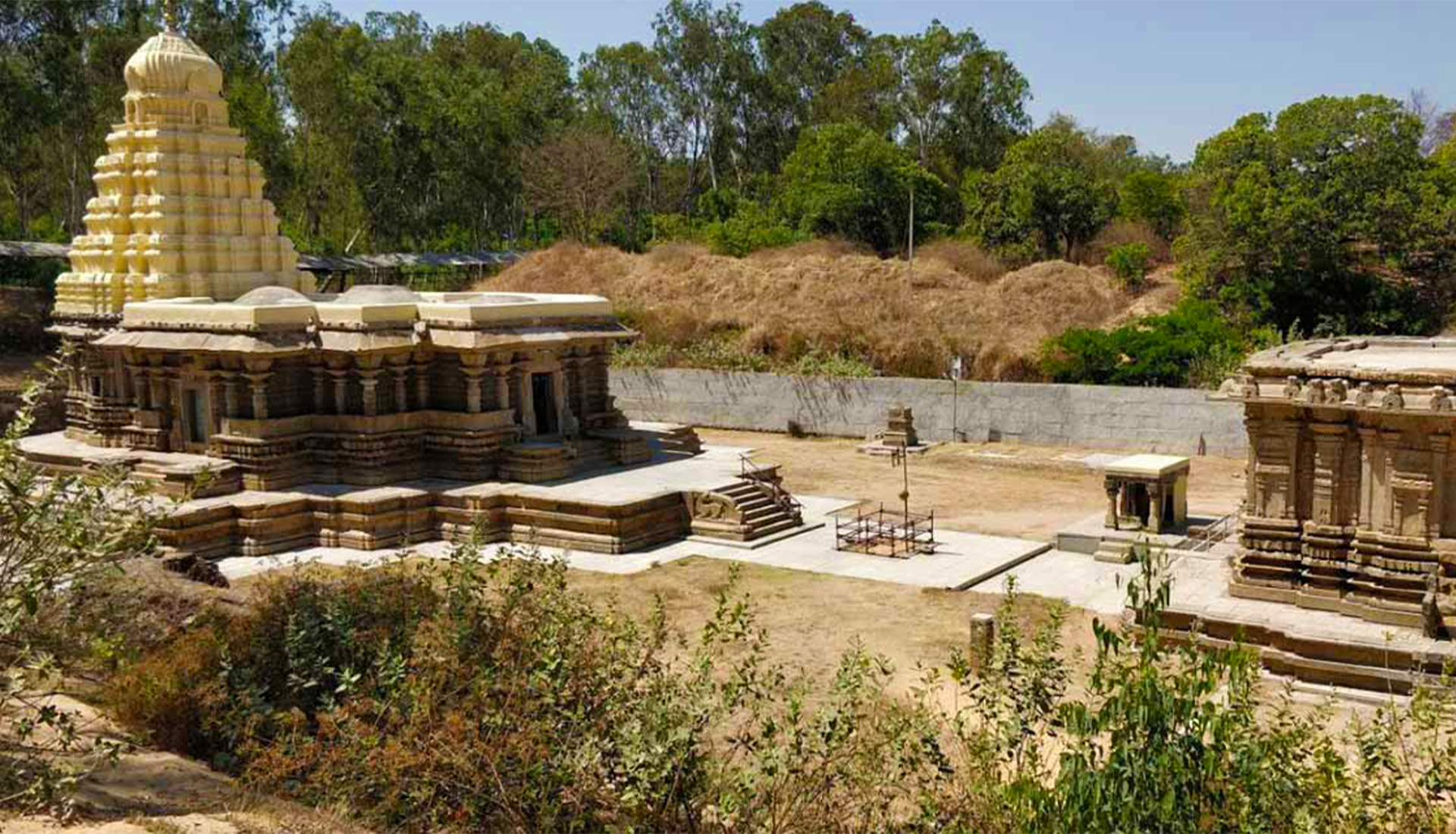
Talakad, or Talakadu, holds historical and archaeological significance, situated 45 km from Mysore and 185 km from Bangalore in Karnataka, India. Positioned on the left banks of the Kaveri river, Talakad is renowned for its spiritual importance and scenic beauty, characterized by vast expanses of sand.
Historically, Talakad witnessed the rule of the Western Gangas from 350 to 1050 AD until the Cholas overthrew them in the 11th century. Subsequently, the region came under the influence of the Hoysala Empire in the 12th century, known for constructing the remarkable Vijayanarayana Chennakesava Temple at Belur. Following the Hoysalas, the powerful Vijayanagara Kingdom rulers and the Maharajas of Mysore governed the area.
Talakad boasts temples of archaeological importance, with the five Lingams representing the five faces of Shiva, known as Pancha Pathi, being particularly famous. These temples include Pathaleshwara, Maruleshwara, Arkeshwara, Vaidyanatheeshwara, and Mallikarjuna. The Panchalinga Darshana festival, held once every 12 years, attracts pilgrims to worship these revered shrines, making it a sacred and culturally rich destination.

General Somanatha, under Hoysala King Narasimha III’s rule in the 13th century, founded Somanathapura. He created an Agrahara, granting land to Brahmins and allocating resources for temple construction and maintenance. The village, located 35 kilometers east of Mysore in Karnataka, is renowned for the exceptional Prasanna Chennakesava Temple, a masterpiece of Hoysala architecture. Constructed in 1258 CE, this Vaishnav Hindu temple venerates the might and beauty of Lord Krishna. Celebrated for its intricate carvings and stunning architecture depicting scenes from Hindu mythology, the temple stands on a star-shaped platform in the midst of a captivating garden. Its exterior boasts detailed carvings of gods, goddesses, and mythical creatures, while the interior houses a beautiful statue of Lord Vishnu.

Melukote, nestled in Karnataka’s Pandavapura taluk, is a sacred haven on rocky hills—Yadugiri, Yaadavagiri, and Yadushailadeepa—overlooking the Cauvery valley. Located 51 km (32 miles) from Mysore and 133 km (83 mi) from Bangalore, Melukote is adorned with the Cheluvanarayana Swamy Temple, showcasing an annual celebration of crowns and jewels. The hill summit hosts the Yoganarasimha Temple, surrounded by shrines and ponds across the town. Home to the Sanskrit Research Academy, Melukote safeguards thousands of Vedic and Sanskrit manuscripts.
In the 12th century, Srivaishnava saint Sri Ramanujacharya, from Tamil Nadu, spent 12 transformative years in Melukote. Beyond its religious significance, Melukote charms with stunning natural beauty, notably the Melukote Hill, offering panoramic views. The town’s cultural heritage thrives through festivals, with the Vairamudi festival, honoring Lord Cheluvanarayana Swamy, drawing devotees nationwide. Melukote stands as a spiritual, cultural, and scenic gem in Karnataka’s landscape.
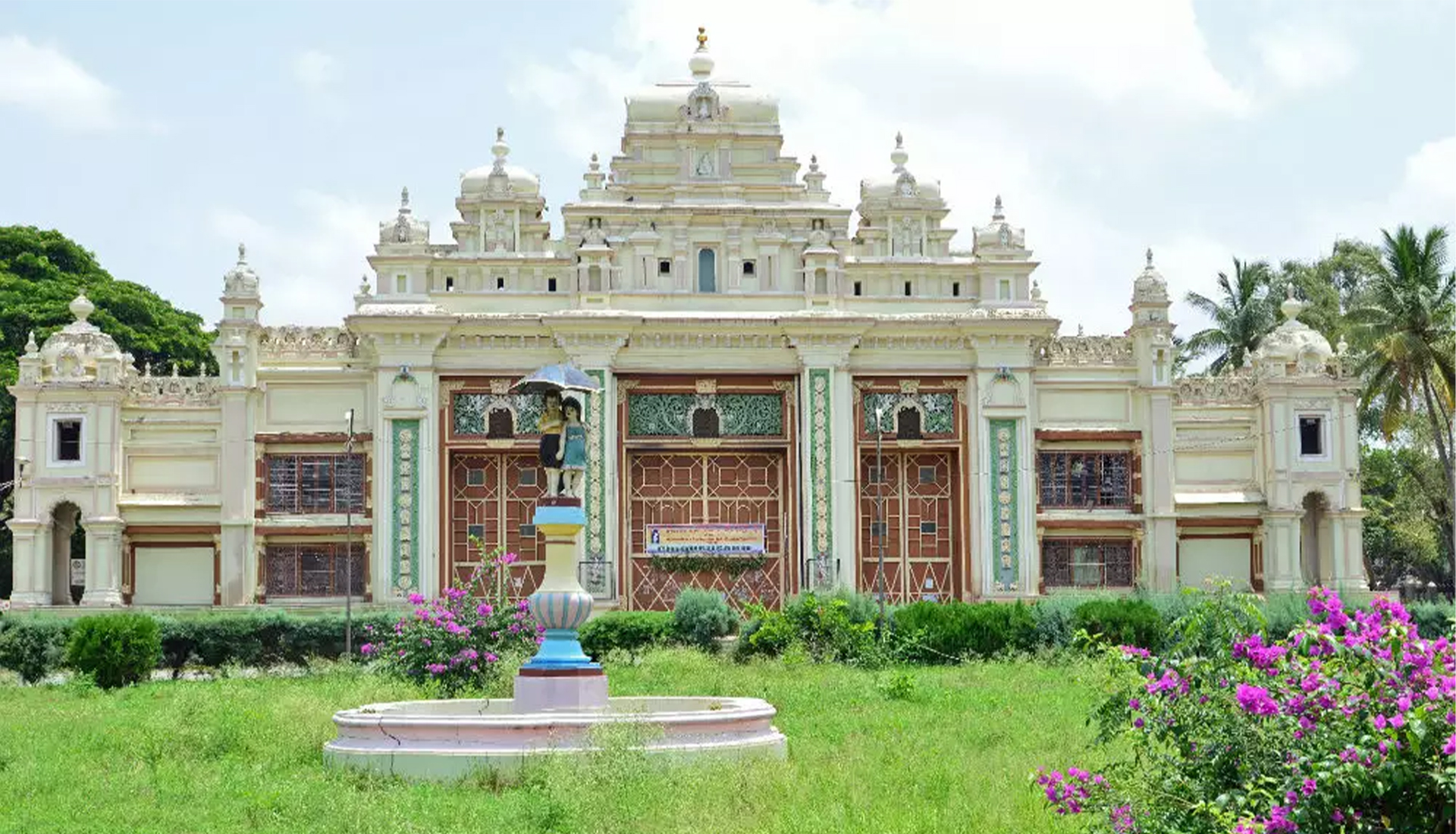
The Jaganmohan Palace Art Gallery and Auditorium, located in the city of Mysore in the southern Indian state of Karnataka, attract numerous tourists. Initially serving as a residence for the royal family, the palace now houses an extensive collection of art and artifacts. Renowned paintings by Indian artists such as Raja Ravi Varma and S.G. Vasudev, along with sculptures, antique coins, and musical instruments, are featured in the art gallery. The palace’s auditorium hosts various cultural events, including music concerts, dance performances, and theater productions.
Exploring the palace’s remarkable architecture and admiring the displayed artwork provides visitors with a captivating experience. The Jaganmohan Palace Art Gallery and Auditorium stand as a testament to the rich history and culture of the Mysore region, attracting those interested in the artistic and cultural heritage it preserves.
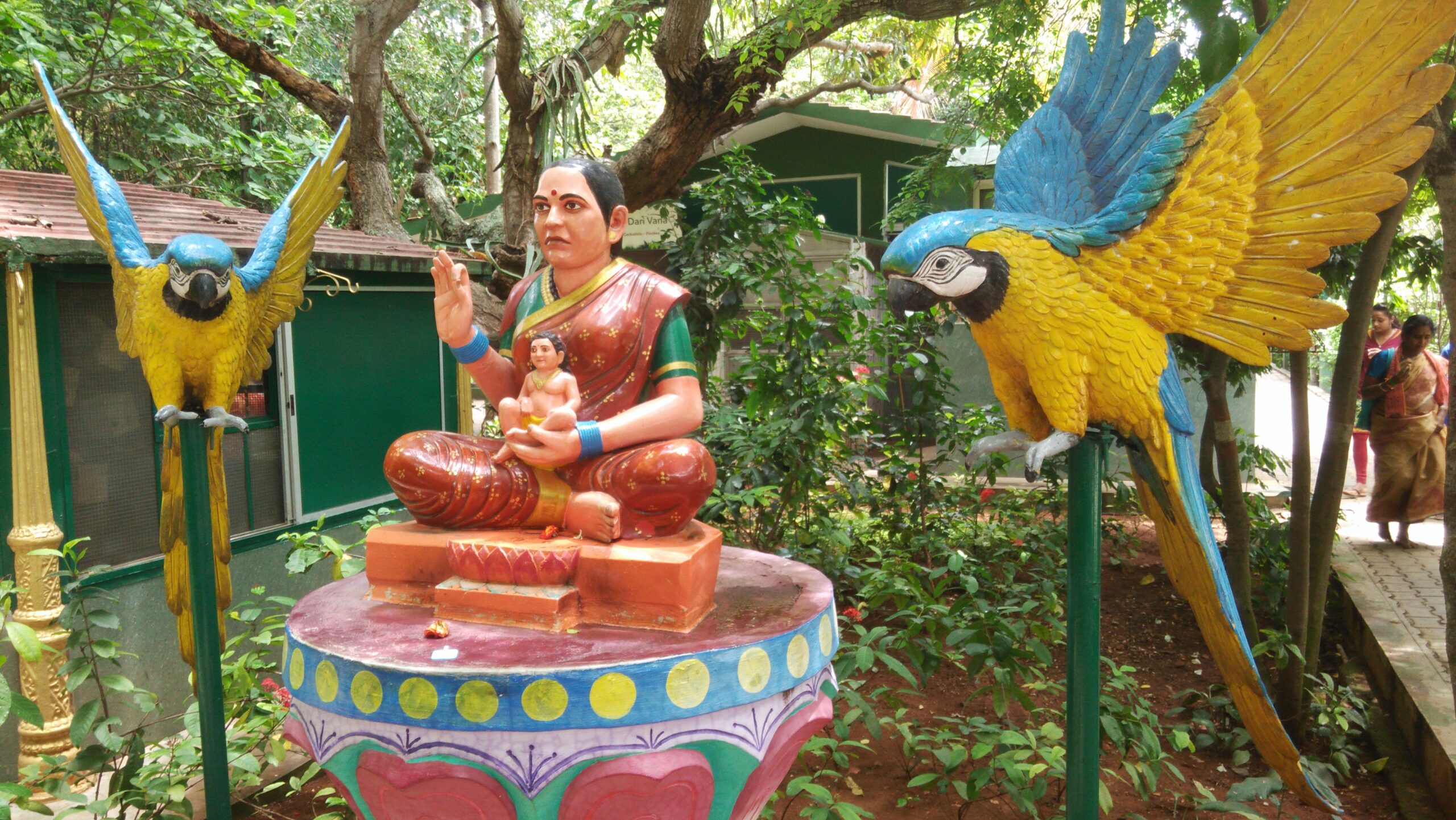
Shuka Vana, a distinctive bird sanctuary situated in Mysore, Karnataka, was founded in 2012 by the Avadhoota Datta Peetham for the conservation and rehabilitation of various bird species, especially parrots. The sanctuary hosts a diverse collection of parrots, parakeets, and other exotic birds, emphasizing their well-being and rehabilitation. A dedicated hospital within the sanctuary provides medical care to injured and sick birds.
Visitors to Shuka Vana can engage in bird-watching, guided tours, and educational programs focused on bird conservation. The sanctuary’s gift shop offers bird-related items, including feeders, birdhouses, and conservation literature.
Shuka Vana, meaning “parrot park,” holds a Guinness World Record for housing the largest number of bird species in an aviary, with 2,200 individual birds. Located on the Nanjanagud-Mysore Highway, the sanctuary serves as both a conservation center and an educational destination for children.
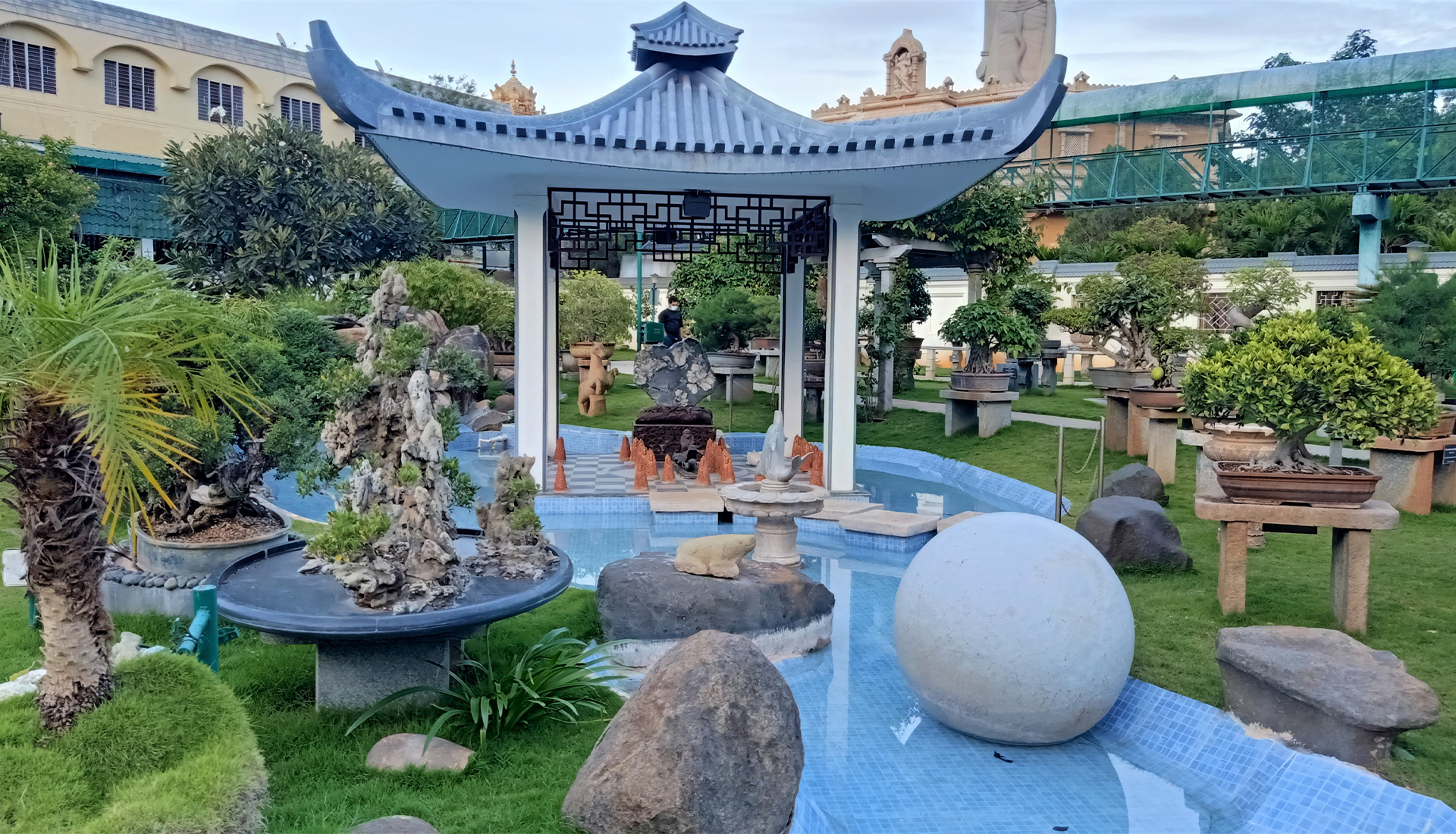
The Bonsai Garden in Mysore, Karnataka, is a captivating oasis featuring a diverse array of miniature trees meticulously cultivated in pots. Established in 1986 by Sri Sachichidananda Swamiji within his ashram, the Kishkinda Moolika Bonsai Garden has flourished over four acres, evolving since the ashram’s inception in 1966.
This unique garden hosts non-hybridized coconut trees from various countries worldwide, creating a rich tapestry of bonsai trees aged from 1 to 200 years. Some trees even serve medicinal purposes, reflecting the holistic vision of Sri Swamiji. The Garden’s distinctive touch includes bonsai trees grown with special Music for Meditation and Healing, named after Indian Ragas.
Structured in themed groups such as the Indian zodiac system, classical music tunes, stars, plants associated with the mother goddess, and those linked to the 7 sages, the Bonsai Garden offers a harmonious fusion of nature, culture, and artistic expression in the heart of Mysore.
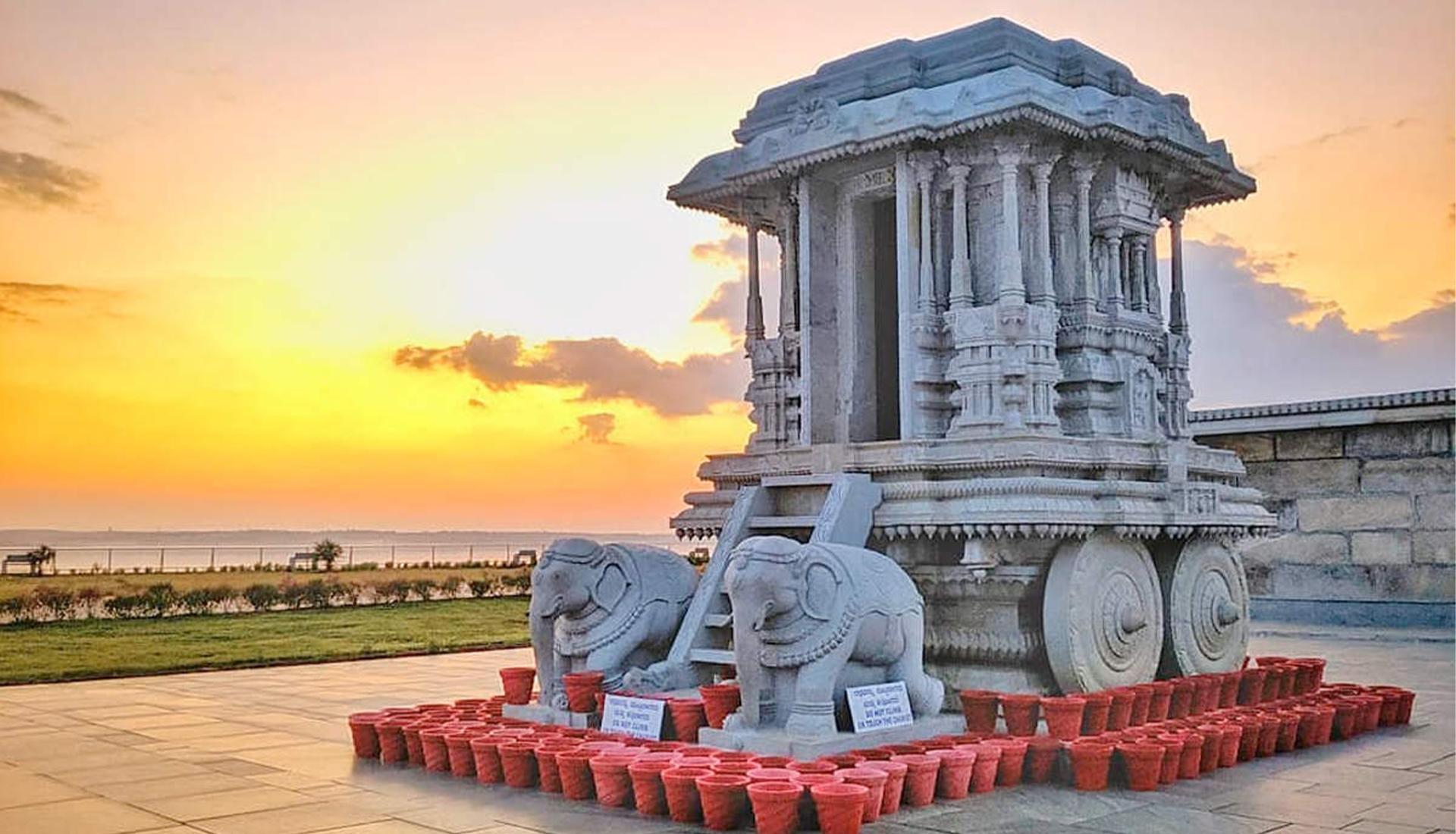
Certainly! Venu Gopal Swamy Temple, embraced by nature’s beauty, stands as a marvel. Its Hoysala-style architecture and stone chariot add allure, creating a serene and sacred atmosphere. The influx of over 15,000 visitors on a Sunday underscores its popularity, and the scenic backdrop, accentuated by the reservoir, enhances the overall experience.
The temple’s resilience, having relocated due to the KRS dam construction, underscores its historical importance. The safety measures in place contribute to a secure and enjoyable visit. While the absence of traditional offerings and a donation box may differ from typical temples, it doesn’t diminish the spiritual significance.
Venu Gopal Swamy Temple stands as a testament to the harmonious blend of nature and spirituality, making it a must-visit destination. Its rich history, architectural splendor, and tranquil surroundings offer visitors a unique and immersive experience. Witness the divine beauty of the Venu Gopal Swamy Temple, where nature and spirituality converge in a breathtaking panorama.
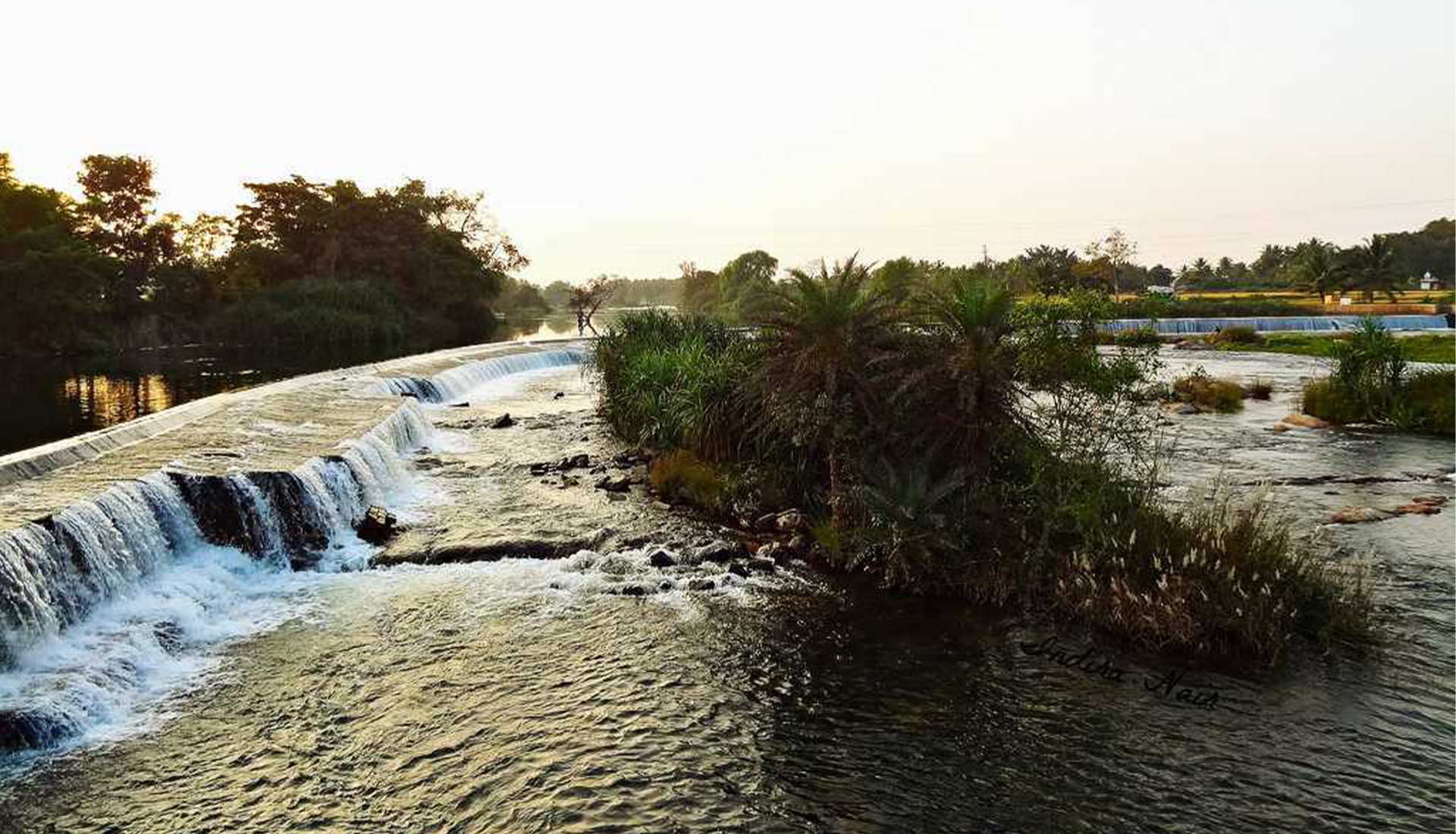
Take a break from the daily grind and venture to Balmuri and Edmuri Falls! Why settle for man-made water parks when you can splash around in the serene Kaveri River? Balmuri Falls may be artificial, but the peaceful ambiance is 100% real. Enjoy a lazy afternoon swimming, fishing, and bird watching. Don’t forget to pack a picnic – you’ll soak up the sun and immerse yourself in nature. Just downstream from Balmuri, lies Edmuri Falls. It may be smaller, but it’s just as mighty in beauty and tranquility. Stroll through lush greenery, dip your toes in the water, and let the natural bounty wash away your worries. Whether for a day trip or extended weekend getaway, come and escape from the chaos of city life at these ideal retreats.

Snow City Mysuru, inaugurated on April 14, 2019, stands as Mysore City’s first indoor snow theme park, providing an exceptional experience of snow-based activities in a tropical setting. Spanning 10,000 square feet, the park offers visitors the thrill of snowballing, mountain climbing, snow jumping, sliding, sledding, dancing, snow skiing, and snow sliding, accompanied by lively DJ music.
Maintaining a chilly temperature of -5 degrees Celsius, the park equips visitors with warm clothing and boots to ensure comfort in the cold environment. Snow City Mysuru, a brainchild of a member of the erstwhile Mysuru royal family, Pramoda Devi Wadiyar, has become a popular escape during Mysore’s hot summer months. Families and friends flock to enjoy the unique experience, complemented by a snow café offering a variety of hot and cold beverages and snacks. In essence, Snow City Mysuru promises a memorable day of frosty fun in a tropical locale.
For Tickets visit https://underwaterzone.com/visit-the-best-trending-leisure-place-of-mysuru/

The Namdroling Monastery, popularly known as the Golden Temple, stands as a Buddhist haven in Bylakuppe, Karnataka. This Tibetan refugee settlement in Mysore district encompasses a sprawling temple complex, accommodating over 5,000 monks and nuns. The main prayer hall, adorned with exquisite murals and statues, hosts daily chanting sessions and prayers, providing a spiritual experience for visitors.
Renowned for its splendid architecture, the Golden Temple showcases intricate carvings and vibrant paintings on its exteriors. Surrounded by serene gardens and water fountains, the temple offers a tranquil ambiance. Additionally, the complex features a Tibetan market where enthusiasts can procure traditional handicrafts like prayer flags, thangkas, and Tibetan jewelry.
A visit to the Golden Temple is a must for those intrigued by Buddhism and Tibetan culture. The combination of stunning architecture, serene surroundings, and daily prayer sessions creates a profoundly peaceful experience for visitors.